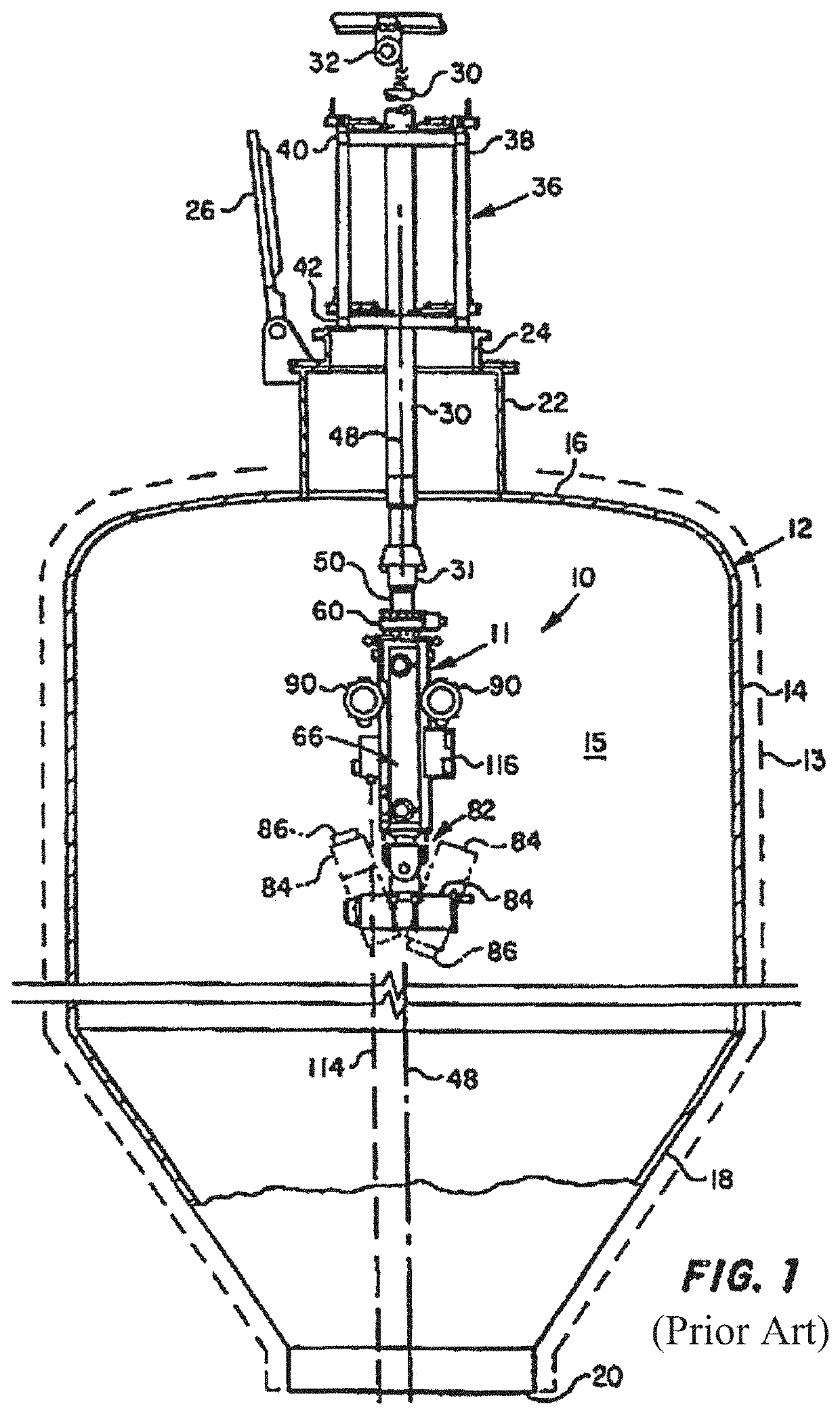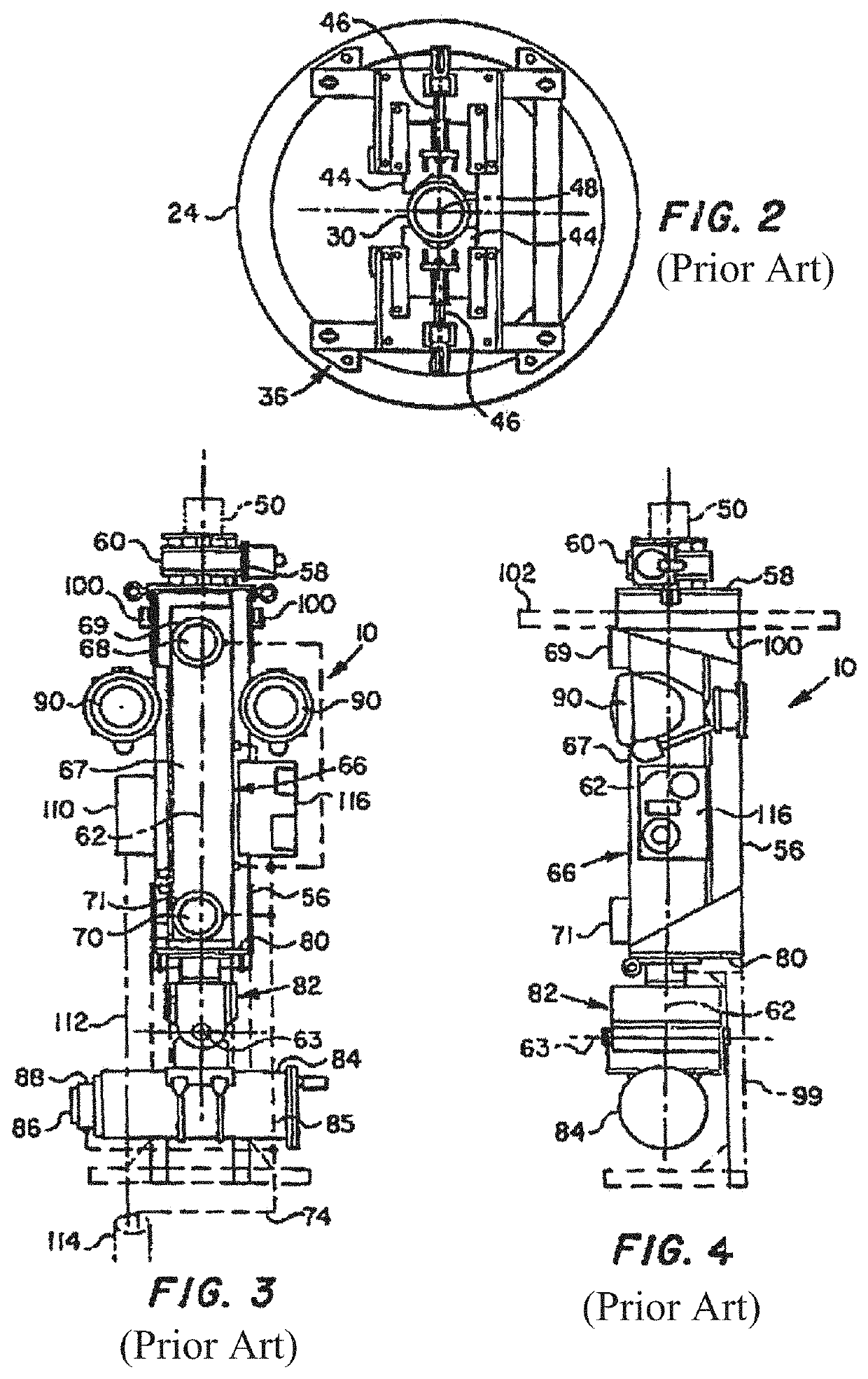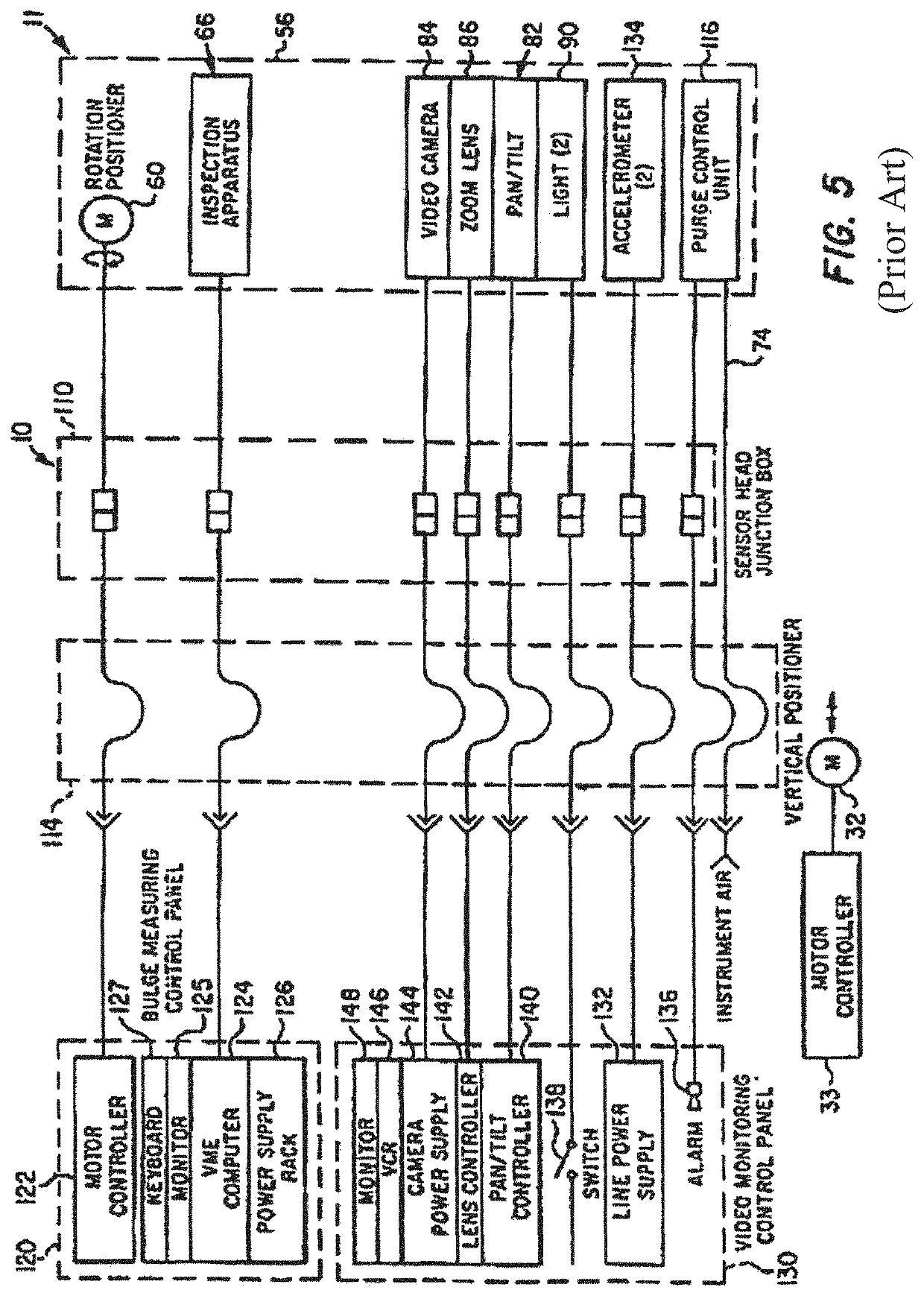Delayed Petroleum Coking Vessel Inspection Device and Method
- Summary
- Abstract
- Description
- Claims
- Application Information
AI Technical Summary
Benefits of technology
Problems solved by technology
Method used
Image
Examples
Embodiment Construction
[0034]In the description of the Figures, the same numbers will be used throughout to refer to the same or similar components.
[0035]As noted previously, a system for photographing and inspecting the inside of a vessel for bulges and the like has been disclosed in U.S. Pat. No. 5,425,279 (the '279 Patent). The components of the present invention are suitably used in combination with the components of the '279 Patent, which are described as follows and in the '279 Patent.
[0036]Referring to FIG. 1, there is illustrated a major part of a vessel inspection system generally designated by the numeral 10. The inspection system 10 includes a unique inspection device 11 shown disposed within the interior of a closable vessel 12 characterized as a delayed petroleum coking drum, although the vessel inspection system is also useful with other types of vessels. The coking drum 12 is a generally cylindrical vessel having a cylindrical sidewall 14, a head 16 and a frustoconical lower distal end port...
PUM
 Login to View More
Login to View More Abstract
Description
Claims
Application Information
 Login to View More
Login to View More - R&D
- Intellectual Property
- Life Sciences
- Materials
- Tech Scout
- Unparalleled Data Quality
- Higher Quality Content
- 60% Fewer Hallucinations
Browse by: Latest US Patents, China's latest patents, Technical Efficacy Thesaurus, Application Domain, Technology Topic, Popular Technical Reports.
© 2025 PatSnap. All rights reserved.Legal|Privacy policy|Modern Slavery Act Transparency Statement|Sitemap|About US| Contact US: help@patsnap.com



